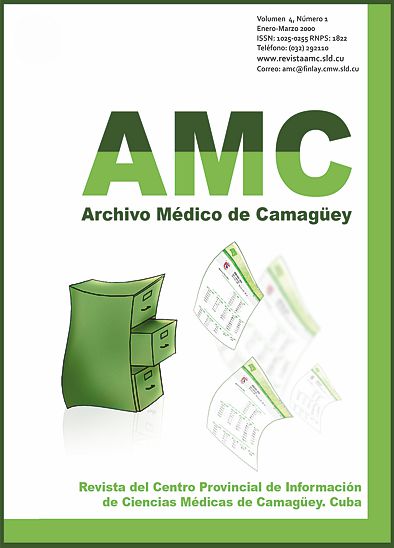Estructura anatómica del plexo hepático extraorgánico
Resumen
Con el objetivo de estudiar la estructura anatómica del plexo extraorgánico hepático en el hombre se realizó un estudio transversal a una muestra constituida por 10 bloques anatómicos de la especie humana. Los mismos fueron disecados mediante el método de macro-microdisección de Voriobov. Al analizar las piezas anatómicas se concretó que el plexo hepático tiene un alto grado de complejidad dado por la forma mixta de distribución, caracterizada por la presencia de cambios morfofuncionales a lo largo de la evolución y el desarrollo. En cuanto componente fibrilar. El número de nervios alcanzó una x= 11, 5 ± 2, 4. Su diámetro osciló entre 0, 4 ± 0, 19 y 1, 26 ± 0. 47 mm. La presencia de ganglios se concretó en el 40% de las disecciones; en tres casos únicos, situado hacia la parte dorsal de la arteria hepática propia y en un caso doble, ventral a dicha arteria, articipan como fuentes de formación del plexo hepático mayores de modo indirecto. Se concluyó la pruralidad de variantes anatómicas en la estructura del plexo hepático, siendo su conocimiento particular de aplicación en la práctica médica.Descargas
Descargas
Publicado
Cómo citar
Número
Sección
Licencia
La Revista Archivo Medico Camagüey, ofrece de forma inmediata después de ser indexada en el Proyecto SciELO; acceso abierto al texto completo de los artículos bajo el principio de hacer disponible y gratuita la investigación para favorecer el intercambio del conocimiento global y coadyuvar a una mayor extensión, publicación, evaluación y uso extensivo de los artículos que se exponen pudiendo ser utilizados, sin fines comerciales, siempre y cuando se haga referencia a la fuente primaria.
Carta De Declaración De Autoría u Derechos De Autor(a)
Conflictos de intereses: los autores deberán declarar de forma obligatoria la presencia o no de conflictos de intereses en relación con la investigación presentada. (Descargar Plantilla para declarar confictos de intereses)
La Revista Archivo Médico Camagüey se encuentra bajo una
Licencia Creative Commons Reconocimiento-NoComercial 4.0 International (CC BY NC 4.0).
Esta licencia permite a otros distribuir, mezclar, ajustar y construir a partir de su obra, incluso con fines comerciales, siempre que le sea reconocida la autoría de la creación original. Esta es la licencia más servicial de las ofrecidas. Recomendada para una máxima difusión y utilización de los materiales sujetos a la licencia. La licencia completa puede consultarse en: https://creativecommons.org/licenses/













